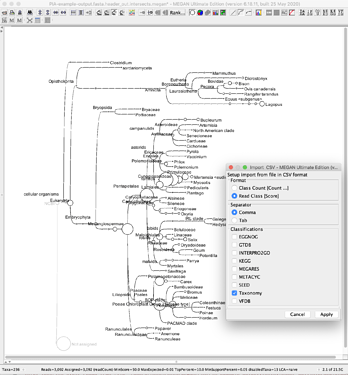I was curious about the possibility of creating a plugin for MEGAN that can generate a kind of pseudo-rma6 file from the summary output of PIA (https://github.com/Allaby-lab/PIA). The rationale in this case is that I’m observing a number of potential false-positive hits in MEGAN (namely plants) that I suspect are driven in part by database incompleteness (as similarly reported recently in the PIA paper: https://doi.org/10.3389/fevo.2020.00084). I like the MEGAN LCA approach, but would be interested in being able to visualize both program’s taxon node classifications together in a MEGAN comparison file that can be easily visualized as a kind of ensemble means of support for a node’s classification (insofar theoretically as nodes classified both with PIA and MEGAN as having the best support as being ‘real’). That, or if there is a means of incorporating an additional PIA-like approach for dealing with database incompleteness and/or non-redundant databases directly in MEGAN to aid in mitigating database limitations driving the potential for inaccurate classifications.
Thanks!
